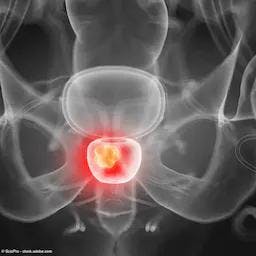News
Article
Urology Times Journal
Urologists prefer reusable cystoscopes to disposable cystoscopes
Author(s):
Urology Times’ exclusive survey reveals urologists/advanced practice providers’ thoughts on reusable vs disposable cystoscopes.
Although their opinions regarding qualitative difference and environmental impact varied, most respondents to an exclusive survey from Urology Times said they use reusable cystoscopes more often than disposable cystoscopes.
Gopal H. Badlani, MD

The survey, developed with Urology Times Co–Editor in Chief Gopal H. Badlani, MD, was distributed via email as well as social media, and gathered data from 134 respondents who answered yes to the question “Are you a practicing urologist, urology resident, or advanced practice provider who routinely uses cystoscopes in clinical practice?”
In an interview with Urology Times, Badlani said he was surprised by the finding that 83% of respondents use reusable cystoscopes more often compared with 17% who use disposable cystoscopes (Figure 1).

“It is borne out by the individual comments that cost is still a concern with the reusable [scopes]…. One certainly has to discuss and/or deal with the cost factor, because in a private practice setting, the bottom line is how much you’re paying for your supplies and instruments and what you’re getting reimbursed. The reimbursement keeps falling; thus, disposable cost remains an issue,” said Badlani, professor and vice chair of urology at Wake Forest University School of Medicine in Winston-Salem, North Carolina.
When asked about the qualitative difference between reusable vs disposable cystoscopes, 47% of respondents said reusable cystoscopes are superior, 10% said disposable ones are superior, and 43% said they are equally good (Figure 2).

“I think [disposable cystoscopes] have a way to go, but they’re getting lighter, easier to use, and very portable,” Badlani said.

When asked to rate the importance of lower risk of infection transmission when choosing a cystoscope type, 81% of respondents said it was somewhat or very important, 17% were neutral, and 2% said it was not or not very important (Figure 3).

Respondents were also asked to rate their level of agreement with the statement, “The environmental impact of cystoscopes should be a major consideration when choosing between reusable and disposable options.” Forty-nine percent agreed or strongly agreed, 21% disagreed or strongly agreed, and 30% were neutral (Figure 4).
Badlani said he is “very conscious” of environmental factors when choosing a cystoscope, and although the use of reusable cystoscopes “has a certain carbon footprint,” he noted, “throwing a good working scope away is a problem.”
Finally, the survey asked which type of scope is faster to prepare for a procedure. Among the respondents, 43% said a disposable cystoscope was faster whereas 25% said a reusable one was faster; 32% said there was no significant difference between the 2 types (Figure 5).

“Disposable [cystoscopes] certainly make it possible to do more cystoscopies in a day. I work 1 day a week in a VA setting. And…I know I’m limited to doing X number of scopes if I’m using just reusable [cystoscopes], but having the disposables available…increases the number of [cases] I can do,” Badlani said.
In addition, respondents were asked to write in any additional thoughts regarding reusable vs disposable cystoscopes. Cost and reimbursement was a common theme in their remarks, with varying opinions on which cystoscope type is more economical.
“Cost is a huge factor for disposables as well as storage,” said 1 respondent, whereas another commented, “Disposable scopes reduce the time and financial burden of cleaning/sterilizing reusable scopes. Disposable scopes are a fine standard diagnostic tool, but the environmental impact is not being discussed and is of great concern.”
Environmental impact was brought up by multiple respondents, with comments including the following: “Reuseable scopes generate more environmental waste than single-use scopes,” “Wasteful,” “I hate throwing away good scopes and the environmental effect of all that plastic,” and “Disposable cystoscopes are wasteful.”

Newsletter
Stay current with the latest urology news and practice-changing insights — sign up now for the essential updates every urologist needs.
































